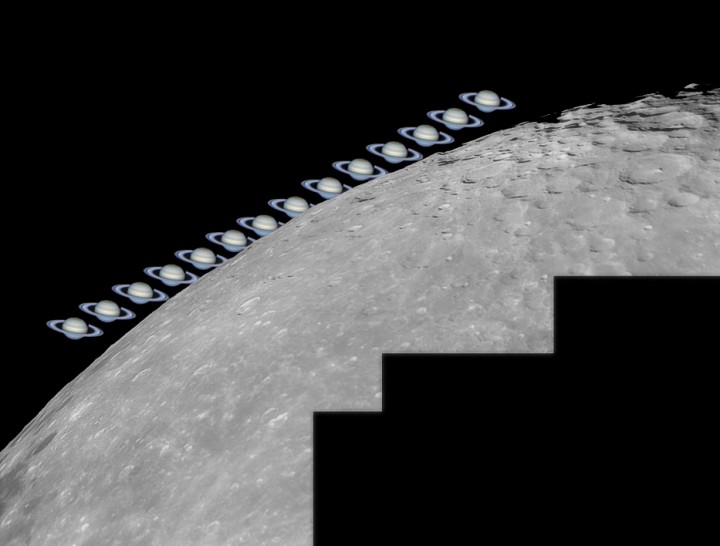t00fri wrote:So why did you claim that Phobos was unchanged?
I said that the
orbital parameters have not been changed. The parameters you have quoted are all to do with the
rotational parameters of the object. This shouldn't have an effect on where the object is in its orbit!
E.g. the .ssc section for Phobos from the version of solarsys.ssc in v1.5.1 as found on the SVN
here is
Code: Select all
"Phobos" "Sol/Mars"
{
Mesh "phobos.cmod"
Texture "phobos.*"
Radius 13.0 # maximum semi-axis
MeshCenter [ -0.233 -0.156 -0.168 ]
EllipticalOrbit
{
Period 0.318910
SemiMajorAxis 9377.2
Eccentricity 0.0151
Inclination 1.075
AscendingNode 128.694 # J2000
ArgOfPericenter 213.804 # J2000
MeanAnomaly 191.771 # J2000
}
UniformRotation
{
Inclination 0.0
MeridianAngle 354.2
}
Albedo 0.07
}The definition of Phobos in the trunk is:
Code: Select all
"Phobos:Mars I" "Sol/Mars"
{
Mesh "phobos.cmod"
Texture "phobos.*"
Radius 13.0 # maximum semi-axis
MeshCenter [ -0.233 -0.156 -0.168 ]
EllipticalOrbit
{
Period 0.318910
SemiMajorAxis 9377.2
Eccentricity 0.0151
Inclination 1.075
AscendingNode 128.694 # J2000
ArgOfPericenter 213.804 # J2000
MeanAnomaly 191.771 # J2000
}
BodyFrame { EquatorJ2000 {} }
CustomRotation "iau-phobos"
# Overriden by CustomRotation
# UniformRotation
# {
# Inclination 0.0
# MeridianAngle 354.2
# }
Albedo 0.07
}The
orbital parameters (in the EllipticalOrbit block) are the same, yet the positions of the moons are different in v1.5.1. As far as I can tell this is because the reference frame for the moons has changed due to the change in the definition of the
rotational frame for Mars, which is used as the default orbital frame for Mars' satellites.
Here's the difference between the definitions of Mars:
Here's v1.5.1
Code: Select all
"Mars" "Sol"
{
Texture "mars.*"
# Texture "mars8k.dds"
BumpMap "marsbump.*"
BumpHeight 2.5
Color [ 1 0.75 0.7 ]
HazeColor [ 1 1 1 ]
HazeDensity 0.45
Radius 3396 # equatorial
# Oblateness 0.0069
Atmosphere {
Height 30
Lower [ 0.8 0.6 0.6 ]
Upper [ 0.7 0.3 0.3 ]
Sky [ 0.83 0.75 0.65 ]
Sunset [ 0.7 0.7 0.8 ]
# Slightly bluish sunset, as seen in true color pictures
# from Pathfinder
Mie 0.0024
MieAsymmetry -0.15
Rayleigh [ 0.0010 0.0006 0.0003 ]
Absorption [ 0 0 0 ]
MieScaleHeight 20
}
CustomOrbit "vsop87-mars"
EllipticalOrbit
{
Period 1.8809
SemiMajorAxis 1.5237
Eccentricity 0.0934
Inclination 1.8506
AscendingNode 49.479
LongOfPericenter 336.041
MeanLongitude 355.453
}
UniformRotation
{
Period 24.622962
Inclination 26.72
AscendingNode 82.91
MeridianAngle 136.005
}
Albedo 0.150
}Here's the current trunk version
Code: Select all
"Mars" "Sol"
{
Texture "mars.*"
# Texture "mars8k.dds"
BumpMap "marsbump.*"
BumpHeight 2.5
Color [ 1 0.75 0.7 ]
HazeColor [ 1 1 1 ]
HazeDensity 0.45
Radius 3396 # equatorial
# Oblateness 0.0069
Atmosphere {
Height 30
Lower [ 0.8 0.6 0.6 ]
Upper [ 0.7 0.3 0.3 ]
Sky [ 0.83 0.75 0.65 ]
Sunset [ 0.7 0.7 0.8 ]
# Slightly bluish sunset, as seen in true color pictures
# from Pathfinder
Mie 0.0024
MieAsymmetry -0.15
Rayleigh [ 0.0010 0.0006 0.0003 ]
Absorption [ 0 0 0 ]
MieScaleHeight 20
}
CustomOrbit "vsop87-mars"
# Overridden by CustomOrbit
# EllipticalOrbit
# {
# Period 1.8809
# SemiMajorAxis 1.5237
# Eccentricity 0.0934
# Inclination 1.8506
# AscendingNode 49.479
# LongOfPericenter 336.041
# MeanLongitude 355.453
# }
BodyFrame { EquatorJ2000 {} }
CustomRotation "iau-mars"
# Overriden by CustomRotation
# UniformRotation
# {
# Period 24.622962
# Inclination 26.72
# AscendingNode 82.91
# MeridianAngle 136.005
# }
Albedo 0.150
}As you can see, Mars now has its body frame set to EquatorJ2000, which I suspect results in a change to the default orbital frame of the satellites, hence without changing the numeric values for the orbital parameters, the positions of Phobos and Deimos are different.








